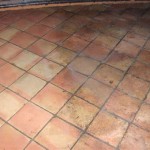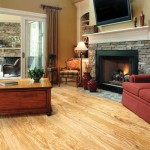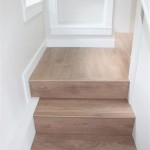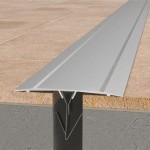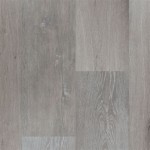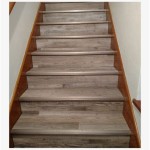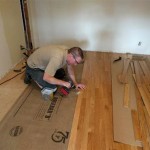```html
Expert Advice on Hardwood Flooring in USA Today
Hardwood flooring remains a highly desirable option for homeowners across the United States, offering a blend of aesthetic appeal, durability, and potentially, increased property value. Selecting, installing, and maintaining hardwood flooring, however, requires careful consideration and a thorough understanding of the various factors involved. This article provides expert advice on navigating the complexities of hardwood flooring, drawing upon industry best practices and professional knowledge to help readers make informed decisions.
The decision to install hardwood flooring represents a significant investment. Understanding the diverse types of hardwood available, the installation methods appropriate for specific subfloors, and the ongoing maintenance requirements are all critical aspects of ensuring a successful and long-lasting flooring solution. Furthermore, staying abreast of emerging trends in hardwood flooring, such as sustainable sourcing and innovative finishing techniques, can help homeowners achieve both their design goals and their commitment to environmental responsibility.
Key Point 1: Understanding Hardwood Types and Grades
One of the first and most crucial decisions involves selecting the appropriate type of hardwood. Hardwood flooring is broadly categorized into two types: solid hardwood and engineered hardwood. Solid hardwood is composed of a single piece of wood, typically ¾ inch thick. It is known for its durability and longevity, often lasting for generations with proper care. Common solid hardwood species include oak (red and white), maple, cherry, walnut, and hickory. Each species offers unique characteristics in terms of grain pattern, color, and hardness.
Engineered hardwood, on the other hand, consists of multiple layers of wood veneer bonded together, with a top layer of solid hardwood providing the visible surface. Engineered hardwood offers several advantages over solid hardwood, including greater stability in environments with varying humidity levels. This makes it a suitable option for basements and other areas where moisture may be a concern. It is also generally more affordable than solid hardwood and can be installed over a wider range of subfloors, including concrete.
Beyond the distinction between solid and engineered hardwood, different grades of wood exist within each species. These grades are determined by the presence of knots, variations in color, and other natural characteristics. Clear grade hardwood, for example, exhibits minimal imperfections and offers a uniform appearance. Select grade hardwood allows for some minor variations, while common grades feature more pronounced knots and color changes. The choice of grade ultimately depends on the desired aesthetic and the homeowner's tolerance for natural imperfections.
The Janka hardness scale is a widely used measure of a wood species' resistance to denting and wear. The higher the Janka rating, the harder and more durable the wood. Species like Brazilian Cherry and Hickory have high Janka ratings, making them suitable for high-traffic areas. Softer woods like Black Walnut, while aesthetically pleasing, may be more susceptible to scratches and dents. Considering the expected use of the room and the lifestyles of the occupants is essential when selecting a hardwood species.
The origin of the hardwood is also a critical factor. Sustainably sourced hardwood ensures that the wood is harvested responsibly and that forests are managed for long-term health. Look for certifications from organizations like the Forest Stewardship Council (FSC) to ensure that the hardwood is sourced from well-managed forests. Choosing sustainably sourced hardwood contributes to environmental conservation and supports responsible forestry practices.
Key Point 2: Installation Methods and Subfloor Preparation
Proper installation is paramount to the performance and longevity of hardwood flooring. The installation method depends on the type of hardwood (solid or engineered), the type of subfloor (wood, concrete, or other material), and the homeowner's preferences. Common installation methods include nailing, gluing, and floating.
Nailing is the traditional method for installing solid hardwood flooring over a wood subfloor. This method involves using a specialized flooring nailer to secure the hardwood planks to the subfloor. Nailing provides a strong and secure connection, but it is not suitable for concrete subfloors or engineered hardwood. A moisture barrier is typically required between the wood subfloor and the solid hardwood to prevent moisture from damaging the wood.
Gluing involves applying an adhesive directly to the subfloor and then pressing the hardwood planks into the adhesive. This method is commonly used for installing engineered hardwood over concrete subfloors. The adhesive provides a strong bond between the flooring and the subfloor, preventing movement and squeaking. The correct type of adhesive, compatible with both the hardwood and the subfloor, must be selected.
Floating involves interlocking the hardwood planks together without attaching them directly to the subfloor. A thin foam underlayment is typically placed between the hardwood and the subfloor to provide cushioning and reduce noise transmission. Floating installations are generally easier and faster than nailing or gluing, making them a popular choice for DIY projects. This method is primarily used for engineered hardwood.
Proper subfloor preparation is critical, regardless of the installation method. The subfloor must be clean, level, and dry. Any imperfections, such as cracks or unevenness, must be addressed before installing the hardwood flooring. A self-leveling compound can be used to smooth out concrete subfloors, while plywood or other shims can be used to level wood subfloors. Inadequate subfloor preparation can lead to problems such as uneven flooring, squeaking, and premature wear.
Prior to installation, the hardwood flooring should be acclimated to the environment in which it will be installed. This involves allowing the wood to adjust to the temperature and humidity levels of the room for several days or even weeks. Acclimation helps to prevent warping, cupping, or gapping after installation. Following the manufacturer's recommendations for acclimation is crucial.
Key Point 3: Maintenance and Care for Long-Term Durability
Proper maintenance is essential to preserving the beauty and extending the lifespan of hardwood flooring. Regular cleaning and protective measures can help to prevent scratches, dents, and other damage. The specific maintenance requirements depend on the type of finish applied to the hardwood.
Surface finishes, such as polyurethane, provide a protective layer on top of the wood. These finishes are durable and water-resistant, making them relatively easy to maintain. Regular sweeping or vacuuming is essential to remove dirt and debris. A damp mop with a pH-neutral wood floor cleaner can be used to clean the floor regularly. Avoid using excessive water, as this can damage the finish and the wood. Never use abrasive cleaners, as these can scratch or dull the finish.
Penetrating oil finishes, such as tung oil or linseed oil, penetrate into the wood fibers and provide a natural look and feel. These finishes require more frequent maintenance than surface finishes. Regular waxing or oiling is necessary to maintain the protective layer. Penetrating oil finishes are less water-resistant than surface finishes, so spills should be cleaned up immediately.
Preventative measures can help to minimize wear and tear on hardwood flooring. Place rugs or mats at entrances to trap dirt and debris. Use furniture pads under the legs of chairs and tables to prevent scratches. Avoid wearing shoes with high heels or sharp objects on hardwood floors. Control humidity levels in the home, as extreme fluctuations in humidity can cause the wood to expand or contract. Using a humidifier during dry months and a dehumidifier during humid months can help to maintain a stable environment.
For solid hardwood, refinishing is an option to restore the floor's appearance after years of wear. Refinishing involves sanding down the existing finish and applying a new coat of finish. Solid hardwood can typically be refinished multiple times, extending its lifespan considerably. Engineered hardwood with a thick top layer can also be refinished, but the number of times it can be refinished is limited by the thickness of the wear layer. Professionally refinishing is highly recommended to ensure appropriate sanding and finishing.
Addressing issues such as scratches and dents promptly helps to prevent further damage. Small scratches can often be repaired with a touch-up kit that matches the color of the finish. Deeper scratches or dents may require professional repair. Water damage should be addressed immediately to prevent warping or staining. Regular inspections and proactive maintenance can help to identify and address potential problems before they become more serious.
```%202.jpg?strip=all)
Light Vs Dark Hardwood Flooring America

Flooring Types Pros And Cons Mr Handyman

The Difference Between Solid Hardwood And Engineered Flooring

How To Clean Wood Floors Neighborly Expert Tips
%203.jpg?strip=all)
Light Vs Dark Hardwood Flooring America

11 Types Of Flooring That Will Upgrade Your Home Instantly Colibri Real Estate

Light Vs Dark Hardwood Flooring America

Bonner Springs Svb Wood Floors

Arlington County Hardwood Flooring S Installation Refinishing Sanding Carpeting Virginia M Floors

What Is Laminate Flooring Made Of America
See Also

